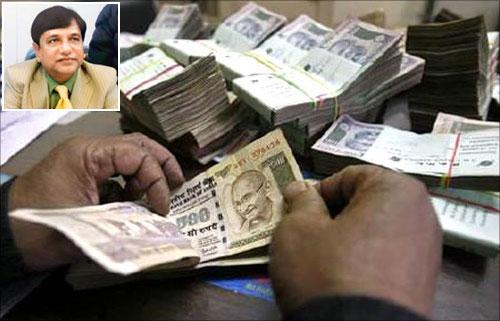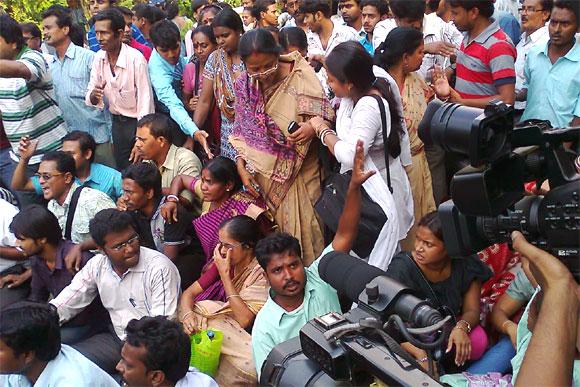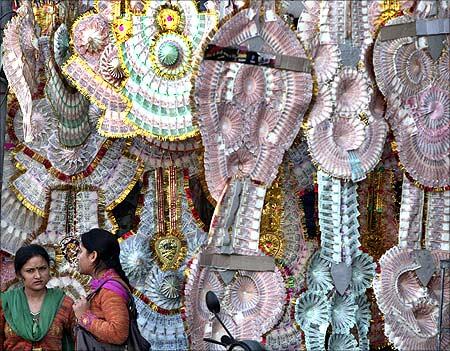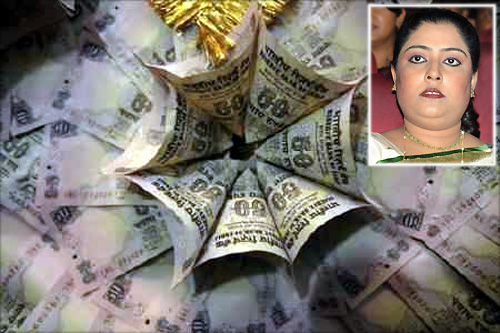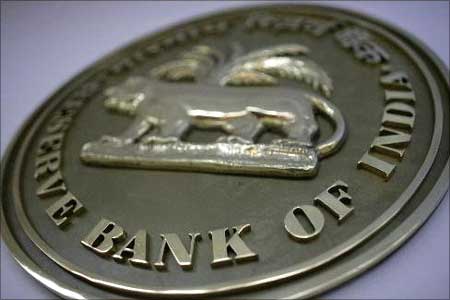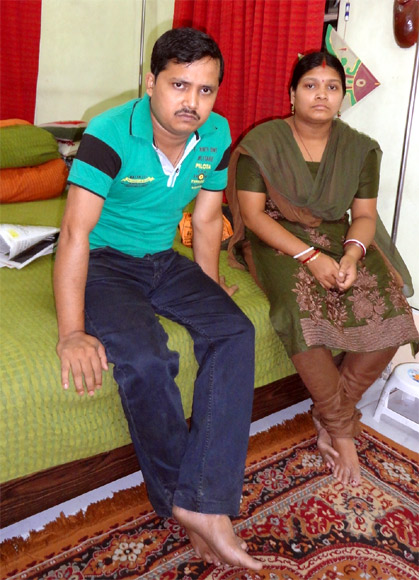 | « Back to article | Print this article |
Why there is little hope for Saradha revival
Over a month into the collapse of the Saradha group in West Bengal, with suicides totalling double digits and widespread social distress in rural and semi-urban areas, the chances of depositors getting back even a small part of their money get slimmer.
It is slowly dawning that a deposit-taking company which survives on new deposits, brought in by collection agents who are paid very high commission, to repay old deposits is bound to collapse.
The history is that this is mostly so, but for one exception -- Peerless General Finance and Investment Co, which was turned around a decade ago.
Before the turnaround, it bore a remarkable resemblance to many aspect of the Saradha operation.
Click NEXT to read further. . .
Why there is little hope for Saradha revival
But what helped it come back from the brink is some crucial differences and of course an innovative strategic turnaround operation that worked.
Hence, the question now is -- can there be some lessons from the Peerless turnaround which can be of help in picking up the pieces of Saradha?
Peerless, incorporated in 1932, was first in the life insurance business until the sector was nationalised in 1956.
Thereafter, as it engaged in taking deposits and investing, over time, it came under the category of residuary non-banking companies, which were officially under the watch of the Reserve Bank of India, but were very lightly regulated.
Click NEXT to read further. . .
Why there is little hope for Saradha revival
Trouble began for Peerless when in 1987 RBI sought to ban it under the act of disallowing prize chits.
The regulator's main concern was that Peerless shared a depositor's first year's subscription with its agent as income and did not recognise it as a liability.
Peerless went to court and secured a ruling from the Supreme Court in its favour.
Then RBI issued the non-banking companies direction requiring them to keep deposits in approved securities.
But crucially, while assiduously overseeing how banks invested all the deposits placed with them, it allowed RNBCs to invest freely 20 per cent of their deposits, while directing that the rest 80 per cent be placed in governments securities.
This loophole was plugged only in the 2000s.
Click NEXT to read further. . .
Why there is little hope for Saradha revival
Peerless went to court again and this time lost.
Then it changed its mode of operations and split the first year's subscription into processing and maintenance charges.
In response, RBI changed its rules twice and set a ceiling of 84 months for deposits and Rs 10 for processing fees.
Peerless lost its third and final legal battle against RBI in the Supreme Court in 1995 and had to recast its balance sheet.
This involved de-recognising a cumulative Rs 771 crore (Rs 7.71 billion) as income and as a result, there was a gap of Rs 1,400 crore (Rs 14 billion) in the balance sheet.
This severely impaired its net worth.
Click NEXT to read further. . .
Why there is little hope for Saradha revival
In 1996, D N Ghosh, former civil servant and chairman of State Bank of India, after months of deliberation, responded to requests by a succession of people and became the chairman of Peerless.
The first to request was none other than S K Roy, the promoter of Peerless, then it was finance minister Manmohan Singh, thereafter RBI governor C Rangarajan and finally the then West Bengal chief minister Jyoti Basu.
Ghosh, who had a wide exposure to both the public and the private sectors (he had been chairman of Larsen & Toubro and Philips India), scripted and oversaw the turnaround with the same earlier management, led by S K Roy, in place.
Outlining a crucial difference between Saradha and Peerless, Ghosh says: "The late B K Roy, who was the architect of the post-life insurance Peerless, did not want to cheat people."
Click NEXT to read further. . .
Why there is little hope for Saradha revival
He recalls that for the turnaround, he had support from two crucial quarters: "Jyoti Basu and Peerless managing director S K Roy stood by me."
Armed with this, and also aided by important 'concessions' secured from RBI, then under governor Bimal Jalan, he was able to see the turnaround through.
Ghosh adopted a four-pronged strategy and secured the support of two well known professionals -- Dipankar Basu, former chairman of SBI (now chairman of Peerless) and S M Dutta, former chairman of Hindustan Lever -- who joined the board.
The elements of the strategy were: liquidate most of the assets held through subsidiaries and associate companies in unrelated fields like shipping and liquor and retain only three customer interactive cash generating operations -- hotel, hospital and realty; recover loans given across the board to important entities and corporates; revamp and redesign the investment operations so that they earned a proper return; and redo entirely the internal audit and inspection mechanism.
Click NEXT to read further. . .
Why there is little hope for Saradha revival
Supervisory responsibilities were allocated among board members.
Basu took charge of investments, Dutta the subsidiaries and associate companies and Ghosh himself oversaw recoveries.
Important as these were, a crucial element of the turnaround exercise was the ability to severely downsize and reduce operating costs.
The company was able to offer voluntary retirement packages to almost two third of its employees, thus bringing down its headcount from around 4,500 to 1,500.
The person who made this possible in the teeth of trade union opposition was none other than the Marxist chief minister of West Bengal Jyoti Basu.
Ghosh told him bluntly, "Either we downsize or go into liquidation."
Click NEXT to read further. . .
Why there is little hope for Saradha revival
The turnaround was made possible by RBI allowing Peerless to continue to accept deposits.
Initially, after the restructuring of the balance sheet and the incentive scheme for deposit canvassing agents, bringing down their commission drastically (from 15 per cent to eventually 4.6 per cent), the flow of new deposits and renewals fell substantially.
But once the company changed its entire business strategy and faith in its ability to survive rose, deposit accretion picked up.
Ghosh admits candidly: "If we had not been allowed to access fresh deposits, we would not have been able to repay old depositors, meeting all commitments."
Click NEXT to read further. . .
Why there is little hope for Saradha revival
In the last years of the 1990s, the going while restructuring was tough. But a crucial opportunity came in the early 2000s with the fall in interest rates.
In 2002-03, Peerless reclassified Rs 2,140 crore (Rs 21.4 billion) of its holdings in government securities as stock in trade and these were actively traded in the market.
In the soft interest rate regime, government securities prices rose.
Both Peerless and public sector banks, which held government securities in excess of their SLR (statutory liquidity ratio) requirements, actively traded in these securities. Peerless earned Rs 166 crore (Rs 1.66 billion) trading profits in the year.
The year 2003 turned out to be a historic year for Peerless. It was able to announce a full turnaround.
Click NEXT to read further. . .
Why there is little hope for Saradha revival
Ghosh was able to deliver within the seven years time that he had taken from RBI.
The annual general meeting that year which took on record the accounts for 2002-03 sent a powerful message through the financial sector and the media picked it up.
The hole in the balance sheet had been filled and Peerless had a net worth of Rs 225 crore (Rs 2.25 billion) and a healthy capital adequacy ratio of 14 per cent without any fresh equity being brought in.
There are some memorable vignettes in the turnaroud story.
In seeking to salvage impaired assets and recover loans, Peerless went to the extent of taking to court even state governments like those of Kerala and Assam.
It restructured private loans sweepingly, sometimes writing off accumulated interest.
Under the leadership of Basu, it completely revamped the investment management set-up, leading to a virtual doubling of investment income over the seven-year period.
Click NEXT to read further. . .
Why there is little hope for Saradha revival
Also, under the leadership of Dutta, it brought down the number of bleeding subsidiaries and associates from around 25 to four.
Some of the points that Ghosh made in his chairman's address in 2003 were prophetic. He drew attention to the continuing unscrupulous practices of some deposit takers and unincorporated bodies.
They were able to get away because of the overlapping jurisdictions of the regulatory bodies.
As long as these operated what were effectively Ponzy schemes, there was trouble ahead. And these were often able to thrive because of the backing of individual state governments.
This was really the story of a death (of Saradha) foretold.
Click NEXT to read further. . .
Why there is little hope for Saradha revival
What can be done now?
The first disadvantage is that Sudipta Sen of Saradha is no S K Roy.
Second, the prospects of the authorities being able to take over enough fungible Saradha assets seem doubtful.
Third, does the present chief minister Mamata Banerjee have the ability to get a person like Ghosh to take over the turnaround operations?
Fourth, even if such a person is brought in, will he get the cooperation of the regulators (Securities and Exchange Board of India and RBI) the way Peerless did?
The reality is that the sun has gone down for good on Saradha, casting lakhs of poor people in West Bengal into darkness and gloom.
